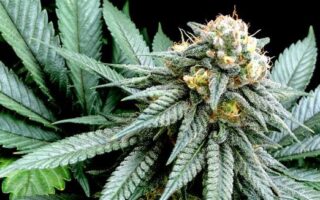Unveiling the Depths of Marijuana Hash: A Rich Tapestry of Tradition and Innovation
In the vibrant kaleidoscope of cannabis culture, few substances command the reverence and intrigue that marijuana hash does. This ancient concentrate, hailed for its potency and unique character, weaves together a rich history that spans continents and centuries. From the bustling markets of Morocco, where artisans skillfully press resin, to the cutting-edge laboratories of today, where precision extraction meets scientific innovation, hash embodies a fascinating blend of art and science. As marijuana legalization continues to reshape perceptions and experiences, hash stands at the forefront, inviting enthusiasts and newcomers alike to explore its diverse forms, applications, and cultural significance. Join us as we delve into the world of marijuana hash, examining its origins, production methods, and the burgeoning interest it inspires in a modern era.
Table of Contents
- Exploring the Unique Origins and Varieties of Marijuana Hash
- The Art of Extraction: Techniques for Quality Hash Production
- Navigating the Legal Landscape of Hash Consumption
- Enhancing Your Experience: Tips for Using and Enjoying Hash
- Q&A
- Concluding Remarks
Exploring the Unique Origins and Varieties of Marijuana Hash
Marijuana hash, with its rich history dating back centuries, is a concentrated form of cannabis that showcases the plant’s unique properties. Originating in regions like the Middle East and Central Asia, hash has evolved over time, drawing influence from local cultures and cultivation techniques. Traditional methods involve the careful collection of trichomes, the small resin glands found on cannabis flowers, which contain the cannabinoids and terpenes that contribute to the plant’s effects. These methodologies have led to a variety of hash types, including:
- Charas: Hand-rolled hash made by rubbing live cannabis plants.
- Bubble Hash: Created using ice and water to separate trichomes.
- Press Hash: Made from compressed kief, a product that contains a high concentration of trichomes.
- Hash Oil: A more potent extract that uses solvents to isolate THC and other cannabinoids.
The diversity in hash production techniques has resulted in a spectrum of flavors, colors, and sensations. For instance, Moroccan hash is typically characterized by its dark, crumbly texture and earthy flavor, while Afghan hash has a rich, buttery consistency with a pungent aroma. Each region brings its own unique characteristics to the hash-making process, influenced by local strains and traditional practices. A comparative overview of notable hash varieties illustrates these differences:
| Region | Characteristics | Flavor Profile |
|---|---|---|
| Morocco | Dark, crumbly texture | Earthy and herbal |
| Afghanistan | Rich and buttery | Sweet and spicy |
| India | Soft and pliable | Floral and herbal |
| Lebanon | Crunchy and dry | Nutty and rich |
The Art of Extraction: Techniques for Quality Hash Production
The process of producing high-quality hash requires a delicate balance of technique, timing, and understanding of the raw materials. Manipulating the trichomes, the tiny resinous glands found on the cannabis flower, is crucial. Two of the most common methods for extraction include solvent-based extractions and ice water methods. Solvent-based extractions utilize substances like butane or ethanol to dissolve the resins from plant material, whereas ice water extraction employs temperature and agitation to separate trichomes from the cannabis flowers. Each method has its advantages; solvent methods can yield a higher purity, while ice water methods tend to preserve more of the plant’s terpenes, resulting in a richer flavor profile.
Regardless of the method employed, attention to detail can significantly affect the final product’s quality. It’s essential to ensure the right temperature and timing during extraction. Here are some key considerations for successful hash production:
- Temperature Control: Keeping the process chilled can prevent unwanted degradation of cannabinoids and terpenes.
- Material Selection: Using fresh, high-quality cannabis flower or trim will enhance the yield of desirable cannabinoids.
- Technique Consistency: Developing a reliable routine or technique will help produce hash with consistent quality.
Navigating the Legal Landscape of Hash Consumption
As cannabis culture continues to evolve, understanding the legal framework surrounding hash consumption becomes increasingly vital for enthusiasts and advocates alike. The legality of hash varies not only from country to country but often within states or regions, creating a complex patchwork that users must navigate. Here are a few key points to consider:
- State Regulations: Each state in the U.S. may have different laws concerning hash production and consumption. It’s essential to familiarize yourself with local statutes.
- Possession Limits: Regulations often dictate how much hash can be legally possessed; exceeding these limits can lead to serious legal repercussions.
- Quality Control: Some regions enforce strict quality standards that hash producers must comply with, ensuring safety for consumers.
Furthermore, the legal landscape can be quite deceptive, with some areas allowing for personal use but prohibiting sales or distribution. Consumers should also be aware of the legal age restrictions applicable to hash consumption, often aligning with those for other cannabis products. Legalization efforts are ongoing, with advocates pushing for clearer guidelines. Understanding the implications of these laws is paramount. Consider this handy reference table for quick insights:
| Region | Legality | Possession Limit |
|---|---|---|
| California | Legal | Up to 8 grams |
| Colorado | Legal | Up to 1 ounce (28 grams) |
| Texas | Illegal | N/A |
Enhancing Your Experience: Tips for Using and Enjoying Hash
To fully appreciate the richness of hash, it’s essential to embrace various methods of consumption that enhance your experience. Vaporizing is one of the most effective ways to savor the flavors and potency without the harshness of smoke. Consider investing in a quality vaporizer designed specifically for concentrates. Alternatively, you could create your own hash-infused edibles—the perfect way to incorporate hash into a delicious treat. When doing so, remember to decarboxylate your hash first, which activates its psychoactive properties and elevates the effects.
Understanding the nuances of hash can also augment your enjoyment. Take the time to explore different strains of hash, as each type boasts a unique flavor profile and stimulating effect. Consider experimenting with methods like dabbing, which provides a clean and potent experience—perfect for those who appreciate a quick onset of effects. Furthermore, usage should match your environment and state of mind; whether you’re seeking relaxation after a long day or a creative boost, the right setting can enhance your enjoyment. Here’s a simple comparison of common consumption methods:
| Method | Pros | Cons |
|---|---|---|
| Vaporizing | Less harmful, flavorful | Requires investment |
| Dabbing | Strong effects, fast-acting | Learning curve |
| Edibles | Long-lasting effects, discreet | Takes time to kick in |
Q&A
Q&A on Marijuana Hash: Unraveling the Mysteries of Hashish
Q: What exactly is marijuana hash?
A: Marijuana hash, commonly known as hashish, is a concentrated form of cannabis made from the resin glands (trichomes) of the marijuana plant. This potent product can be molded into various forms—such as bricks, balls, or cakes—and varies in color from light yellow to dark brown, depending on its quality and the methods used for extraction.
Q: How is hash different from regular cannabis flower?
A: The main difference lies in potency and composition. Regular cannabis flower contains a mixture of trichomes, plant material, and other cannabinoids, while hash is a purified form that primarily focuses on those potent resin glands. As a result, hash typically has a higher concentration of THC, the psychoactive compound, making it more intense than its flower counterpart.
Q: What are the traditional methods for making hash?
A: Hash has been made for centuries using several traditional methods. The most prevalent include hand-rubbing, in which the resin is collected from the hands after handling cannabis plants; water extraction, which uses ice and agitation to separate the trichomes from the plant matter; and dry sifting, where buds are agitated over screens to filter out the fine resin. Each method offers a unique texture and flavor profile to the final product.
Q: Is there a difference between hash and other cannabis concentrates?
A: Yes, there is a distinction. While hash is specifically made from cannabis resin, other concentrates—like oils, waxes, and shatter—use various extraction processes involving solvents such as butane or CO2. Hash can be considered a more “natural” form of concentrate since it often requires little to no chemical intervention, depending on the method used.
Q: How do I consume hash?
A: Hash can be consumed in various ways. Users often crumble it into a joint or bowl with regular cannabis flower, vaporize it using a dab rig, or use a hash pipe designed for concentrated products. Additionally, culinary enthusiasts incorporate hash into recipes, offering a creative avenue for enjoyment.
Q: What potential benefits does hash provide?
A: Hash retains many of the therapeutic properties of cannabis, making it potentially beneficial for both recreational and medicinal users. Its higher potency means that smaller doses can be effective, which may make it appealing for those looking to manage pain, reduce anxiety, or enhance relaxation without consuming large quantities of plant material.
Q: Are there any risks associated with consuming hash?
A: Like all cannabis products, hash comes with its own set of risks. Given its higher THC content, it can lead to stronger psychoactive effects, which may not be suitable for novice users. Overconsumption can result in anxiety, paranoia, or other adverse effects. It’s essential to start with small amounts, especially for those new to hash.
Q: How can I know if I’m getting high-quality hash?
A: Quality hash should have a robust aroma and should crumble or break apart easily. Look for a clean color, typically ranging from light golden to dark brown, and avoid anything that appears overly sticky or wet—this could indicate impurities. A reputable source with good reviews can often guide you to finding the best hash products.
Q: What’s the future of hash in cannabis culture?
A: As the cannabis industry continues to evolve, so too does the fascination with hash. With the rise of artisanal and craft cannabis production, there’s a growing interest in traditional hash-making methods and unique strains. This revival is likely to propel hash into the spotlight, enriching the culture and offering enthusiasts innovative ways to experience cannabis.
This Q&A aims to illuminate the nuances of marijuana hash, helping readers understand its place within the broader cannabis landscape while emphasizing responsible consumption.
Concluding Remarks
In the rich tapestry of cannabis culture, marijuana hash stands out as a testament to the artistry and innovation that have shaped the way we engage with this remarkable plant. As we’ve explored its history, production methods, and diverse applications, it becomes clear that hash is more than just a concentrated form of cannabis; it’s a bridge connecting users to centuries of tradition and community. Whether you’re a seasoned connoisseur or a curious newcomer, the allure of hash lies in its ability to offer a unique experience, inviting exploration and appreciation of its many facets. As legalization spreads and knowledge deepens, we may find ourselves on the brink of a new era in which hash, embraced for its complexity and potential, takes its rightful place among the most celebrated cannabis products. So, as you venture forth in your personal journey with marijuana hash, remember that each puff is not only a moment of enjoyment but also a nod to the legacy and craftsmanship that continues to evolve within this fascinating world. Happy exploring!


